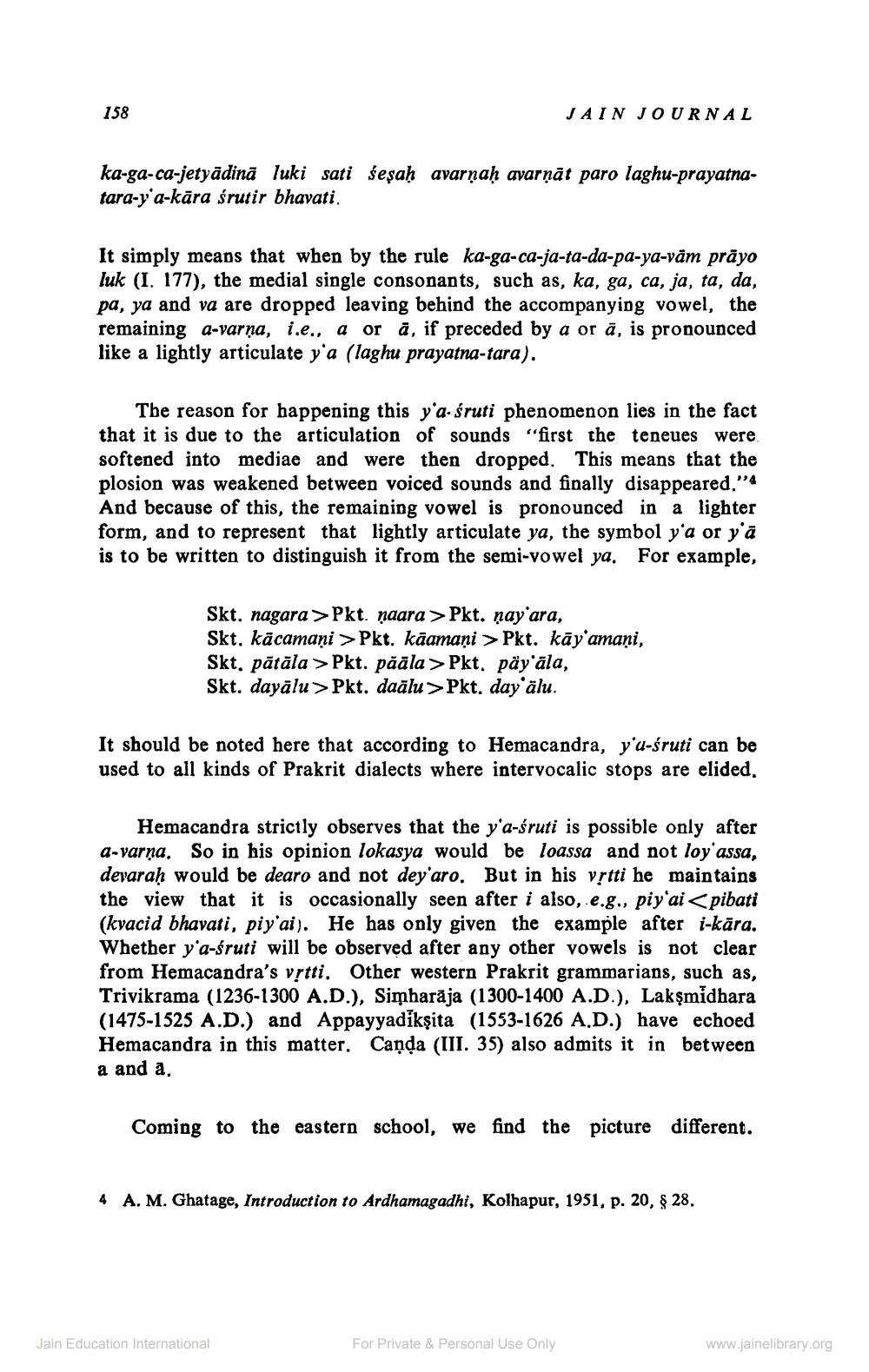________________
158
JAIN JOURNAL
ka-ga-ca-jetyādinā luki sati śeşah avarṇaḥ avarņāt paro laghu-prayatnatara-y'a-kāra śrutir bhavati.
It simply means that when by the rule ka-ga-ca-ja-ta-da-pa-ya-vām prāyo luk (I. 177), the medial single consonants, such as, ka, ga, ca, ja, ta, da, pa, ya and va are dropped leaving behind the accompanying vowel, the remaining a-varna, i.e., a ora, if preceded by a or ā, is pronounced like a lightly articulate y'a (laghu prayatna-tara).
The reason for happening this y'a-śruti phenomenon lies in the fact that it is due to the articulation of sounds "first the teneues were softened into mediae and were then dropped. This means that the plosion was weakened between voiced sounds and finally disappeared."'4 And because of this, the remaining vowel is pronounced in a lighter form, and to represent that lightly articulate ya, the symbol y'a or y'a is to be written to distinguish it from the semi-vowel ya. For example,
Skt. nagara>Pkt. naara > Pkt. nay'ara, Skt, kācamani > Pkt. kāamani > Pkt. kāy amani, Skt. pātāla > Pkt. päāla > Pkt. påy'āla, Skt. dayālu > Pkt. daālu>Pkt. day'ālu.
It should be noted here that according to Hemacandra, y'u-śruti can be used to all kinds of Prakrit dialects where intervocalic stops are elided.
Hemacandra strictly observes that the y'a-śruti is possible only after a-varņa. So in his opinion lokasya would be loassa and not loy assa, devaraḥ would be dearo and not dey'aro. But in his výtti he maintains the view that it is occasionally seen after i also,.e.g., piy'ai <pibati (kvacid bhavati, piy'ai). He has only given the example after i-kāra. Whether y'a-śruti will be observed after any other vowels is not clear from Hemacandra's vrtti. Other western Prakrit grammarians, such as, Trivikrama (1236-1300 A.D.), Simharāja (1300-1400 A.D.), Lakşmidhara (1475-1525 A.D.) and Appayyadikşita (1553-1626 A.D.) have echoed Hemacandra in this matter. Canda (III. 35) also admits it in between a and a
Coming to the eastern school, we find the picture different.
4 A. M. Ghatage, Introduction to Ardhamagadhi, Kolhapur, 1951, p. 20, $ 28.
Jain Education International
For Private & Personal Use Only
www.jainelibrary.org




